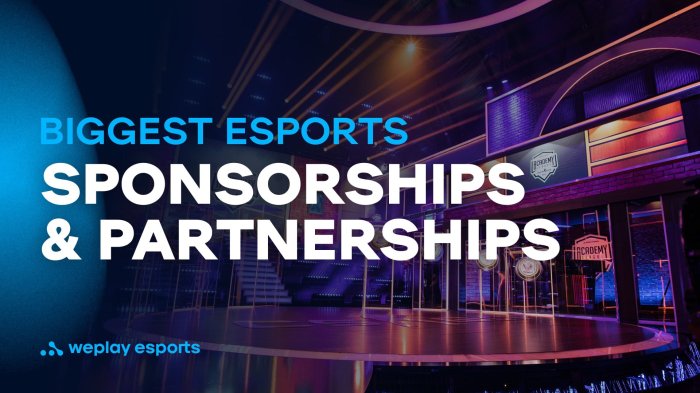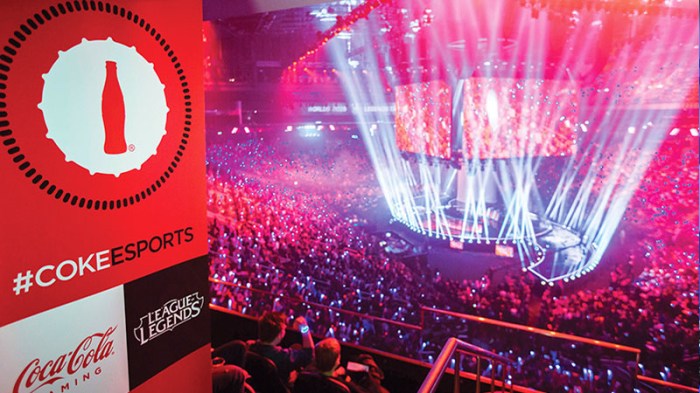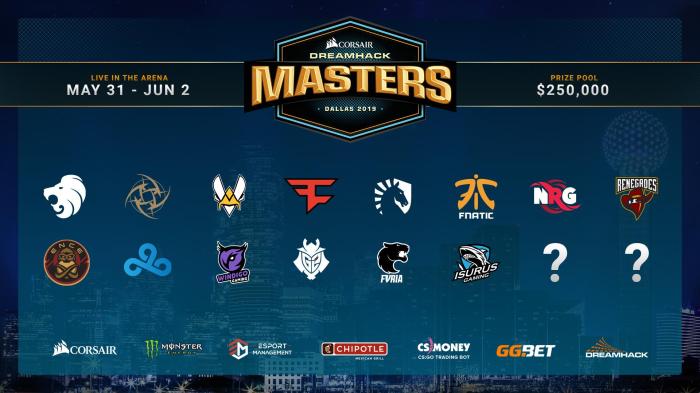Esports Sponsorship is exploding! This isn’t just about slapping a logo on a jersey anymore; it’s a multi-million dollar industry with complex strategies, savvy marketing, and huge potential for ROI. We’ll explore the different types of sponsorships, how to measure success, and what the future holds for brands looking to tap into the passionate world of competitive gaming.
From title sponsorships to in-game advertising, we’ll break down the various models, comparing their effectiveness and highlighting both successes and failures. We’ll also delve into crucial aspects like audience engagement, measuring ROI, and navigating the legal and ethical considerations. Get ready to level up your understanding of esports sponsorship!
Audience Engagement and Measurement in Esports Sponsorships

Esports sponsorships offer a unique opportunity to connect with a highly engaged and passionate audience, but success hinges on effective engagement strategies and robust measurement methods. Understanding how to interact with this demographic and track the return on investment is crucial for maximizing the impact of any sponsorship. This section details strategies for audience engagement and provides methods for measuring the success of esports sponsorships.
Effective Engagement Strategies with the Esports Audience, Esports Sponsorship
Reaching the esports audience requires a tailored approach that understands their preferences and online behavior. Simply placing a logo isn’t enough; authentic engagement is key. Sponsors need to participate actively within the esports ecosystem, building genuine relationships with players, teams, and fans.
- Interactive Content Creation: Developing engaging content like interactive quizzes, polls, and behind-the-scenes videos that resonate with the audience’s interests. For example, a gaming headset company could create a quiz that tests players’ knowledge of different audio settings, offering a prize for the top scorer.
- Community Building: Participating in online forums, Discord servers, and social media platforms where esports fans congregate, fostering a sense of community and building brand loyalty. A sponsor could host regular AMAs (Ask Me Anything) sessions with professional players on their social media channels.
- Influencer Marketing: Collaborating with popular esports streamers and personalities to promote the brand and its products or services. This could involve sponsored streams, product placements, or co-branded merchandise.
- Experiential Marketing: Creating immersive experiences that allow fans to interact directly with the brand, such as attending esports events, participating in online tournaments, or engaging with virtual reality experiences. Imagine a car manufacturer sponsoring a tournament and offering test drives of their latest models at the event.
Measuring Return on Investment (ROI) of Esports Sponsorships
Measuring the ROI of esports sponsorships requires a multifaceted approach that goes beyond simple brand awareness. Tracking key performance indicators (KPIs) provides valuable insights into the effectiveness of the sponsorship.
Key Performance Indicators (KPIs) for Esports Sponsorships
Tracking relevant KPIs is crucial for understanding the impact of the sponsorship. This requires a comprehensive data collection and analysis strategy.
- Website Traffic and Conversions: Tracking website visits, unique visitors, and conversion rates (e.g., purchases, sign-ups) originating from esports sponsorship campaigns. This data can be collected through unique URLs and tracking codes.
- Social Media Engagement: Monitoring metrics such as likes, shares, comments, and mentions across various social media platforms to assess brand awareness and audience sentiment. Tools like social listening platforms can provide detailed insights.
- Brand Awareness and Sentiment: Conducting surveys and focus groups to measure changes in brand awareness, recall, and consumer sentiment before and after the sponsorship campaign. This helps gauge the overall impact on brand perception.
- Sales Lift: Analyzing sales data to determine if there’s a direct correlation between the sponsorship and increased sales of sponsored products or services. This might involve comparing sales figures before, during, and after the campaign.
- Reach and Impressions: Measuring the total number of people exposed to the brand through the sponsorship, including online views, event attendance, and social media reach. This helps quantify the overall reach of the campaign.
Sample Report Outlining Key Metrics for Evaluating Esports Sponsorship Success
This report summarizes the key metrics for evaluating the success of an esports sponsorship campaign. The data is presented in a concise and easy-to-understand format.
| Metric | Target | Actual | % of Target Achieved | Visual Representation |
|---|---|---|---|---|
| Website Traffic | 100,000 | 115,000 | 115% | A bar chart showing the target and actual website traffic, with the actual exceeding the target. The bar representing the actual traffic is significantly taller than the target bar. |
| Social Media Engagement (Likes) | 50,000 | 45,000 | 90% | A pie chart showing the percentage of the target achieved. A large portion of the pie represents the 90% achieved, with a smaller slice representing the 10% shortfall. |
| Brand Awareness (Increase in Unaided Recall) | 10% | 12% | 120% | A line graph showing the brand awareness before and after the campaign. The line sharply increases after the campaign, demonstrating a significant improvement. |
| Sales Lift (Increase in Sales) | 5% | 7% | 140% | A simple column chart comparing sales before and after the sponsorship campaign, clearly showing a higher column for sales after the campaign. |
The Future of Esports Sponsorship

Esports sponsorship is evolving rapidly, driven by the explosive growth of the industry itself and the constant innovation in technology and audience engagement. Understanding the emerging trends and potential challenges is crucial for brands looking to capitalize on this dynamic market. The future of esports sponsorship will be defined by a complex interplay of technological advancements, evolving audience demographics, and the ever-changing landscape of competitive gaming.
Emerging Trends and Opportunities
Several key trends are shaping the future of esports sponsorship. The increasing popularity of mobile esports, for instance, presents a massive untapped market for brands seeking to reach a younger, more diverse audience. Furthermore, the rise of female esports players and audiences creates new opportunities for targeted sponsorships and inclusive marketing campaigns. We’re also seeing a move towards more authentic and integrated sponsorships, where brands collaborate with esports teams and players to create unique and engaging content that resonates with fans.
This shift away from simple logo placements towards meaningful partnerships is vital for long-term success. Finally, the growth of esports in developing markets presents significant expansion potential for brands willing to invest in these regions.
Impact of New Technologies
The integration of new technologies like VR/AR and blockchain will significantly impact esports sponsorships. VR/AR technologies offer immersive viewing experiences and innovative sponsorship opportunities, allowing brands to create interactive advertisements and virtual product placements within the game itself. Imagine a sponsor’s logo appearing dynamically on a virtual stadium scoreboard during a VR esports event, or a product placement seamlessly integrated into the game environment.
Blockchain technology, on the other hand, has the potential to revolutionize fan engagement and sponsorship transparency through the use of NFTs and cryptocurrencies for rewards and exclusive access. This could lead to more secure and verifiable sponsorship deals, providing brands with greater confidence in their investments and allowing fans to participate more directly in the sponsorship ecosystem.
Challenges and Risks
Despite the immense potential, esports sponsorships also present unique challenges and risks. One major concern is the potential for negative brand association due to controversies involving players, teams, or the esports ecosystem itself. Maintaining a robust due diligence process and selecting partners carefully is paramount. Another significant challenge is the constantly evolving nature of the esports landscape. What works today might not work tomorrow, requiring sponsors to remain agile and adapt to the changing trends.
Furthermore, measuring the ROI of esports sponsorships can be complex, requiring sophisticated analytics and tracking methods. Finally, navigating the legal and regulatory complexities of the global esports market, including data privacy and intellectual property rights, is a crucial consideration for brands.
Future Developments in Esports Sponsorship
The future of esports sponsorship will likely see several key developments:
- Increased focus on data-driven sponsorship strategies, utilizing advanced analytics to optimize campaigns and measure ROI.
- Growth of influencer marketing within the esports community, leveraging the reach and influence of popular streamers and players.
- Greater integration of esports sponsorships with other forms of entertainment and media, blurring the lines between traditional and digital marketing.
- Expansion of esports into new markets and demographics, reaching broader audiences and diversifying sponsorship opportunities.
- Increased adoption of blockchain technology for enhanced transparency, security, and fan engagement in sponsorship deals.
Legal and Ethical Considerations in Esports Sponsorship

Esports sponsorships, while offering massive potential for brand growth and audience engagement, navigate a complex landscape of legal and ethical considerations. Failing to address these issues can lead to reputational damage, financial penalties, and even legal action. Understanding and proactively managing these risks is crucial for any brand looking to enter or expand within the esports market.
Brand Safety and Risk Mitigation
Maintaining brand safety is paramount in esports sponsorships. This involves carefully vetting the teams, players, and influencers involved to ensure alignment with a brand’s values and avoid association with controversial figures or activities. For instance, a brand promoting family-friendly products would want to avoid sponsoring a team known for aggressive or toxic online behavior. Effective risk mitigation strategies include thorough due diligence, comprehensive background checks, and the implementation of robust contract clauses that Artikel acceptable conduct and consequences for breaches.
Sponsors should also monitor online activity and social media for any potential issues that could negatively impact their brand. This proactive approach allows for swift intervention and prevents minor issues from escalating into major crises.
Influencer Marketing Regulations and Compliance
The rise of influencer marketing in esports presents unique challenges regarding compliance with advertising regulations. Sponsors need to ensure that all influencer collaborations are transparent and comply with FTC guidelines, including clear disclosure of sponsored content. Failure to do so can result in hefty fines and damage to brand trust. Best practices include clearly defining the scope of the collaboration in contracts, providing influencers with clear guidelines on disclosure, and monitoring influencer posts for compliance.
Using a third-party agency specialized in influencer marketing can also help navigate the complexities of these regulations and ensure adherence to best practices. For example, a sponsor might require influencers to use a specific hashtag to denote sponsored content, or to include a clear written disclosure within the video description.
Data Privacy and Protection
Esports sponsorships often involve the collection and use of personal data, such as player demographics, viewing habits, and engagement metrics. Compliance with data privacy regulations, such as GDPR and CCPA, is crucial. Sponsors need to ensure they have the appropriate legal basis for collecting and processing data, and they must provide users with clear and concise information about how their data is being used.
This includes obtaining explicit consent where necessary and implementing robust security measures to protect data from unauthorized access or disclosure. Failure to comply with data privacy regulations can lead to significant fines and legal action. Transparency is key; sponsors should clearly Artikel their data collection and usage practices in their privacy policies.
Ethical Considerations and Checklist
A proactive approach to ethical considerations is essential for long-term success in esports sponsorships. This includes ensuring fair compensation for players and influencers, avoiding exploitative practices, and promoting a positive and inclusive environment within the esports community. Below is a sample checklist to guide ethical decision-making in esports sponsorship agreements.
| Aspect | Question | Yes/No | Action |
|---|---|---|---|
| Brand Alignment | Does the team/influencer align with our brand values? | Conduct thorough due diligence and background checks. | |
| Transparency | Are all sponsored activities clearly disclosed? | Implement clear disclosure guidelines for all collaborations. | |
| Fair Compensation | Are players and influencers fairly compensated for their work? | Establish fair and competitive compensation structures. | |
| Data Privacy | Do we comply with all relevant data privacy regulations? | Implement robust data protection measures and obtain necessary consents. | |
| Community Impact | Does the sponsorship promote a positive and inclusive environment? | Assess potential impact and address any concerns proactively. |
FAQ Guide
What are some common pitfalls to avoid in esports sponsorship?
Common pitfalls include poor audience targeting, ineffective activation strategies, lack of clear KPIs, and neglecting ethical considerations. Failing to understand the esports community’s values can also lead to negative backlash.
How can I measure the social media impact of an esports sponsorship?
Track metrics like brand mentions, hashtag usage, reach, engagement (likes, comments, shares), and sentiment analysis to gauge social media impact. Consider using social listening tools for comprehensive data.
What’s the difference between a title sponsor and a jersey sponsor?
A title sponsor is the primary sponsor, often having their name prominently featured in the team or event’s title (e.g., “Team [Sponsor Name]”). A jersey sponsor has their logo displayed on the team’s uniforms.
How do I find the right esports team or organization to sponsor?
Consider factors like the team’s performance, audience demographics, brand alignment, and sponsorship packages offered. Research potential partners thoroughly and ensure a good fit.
